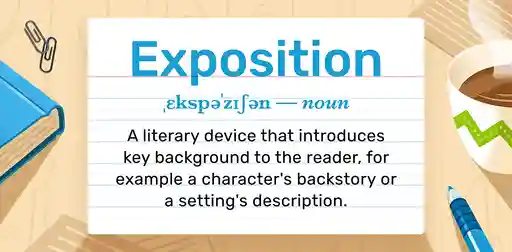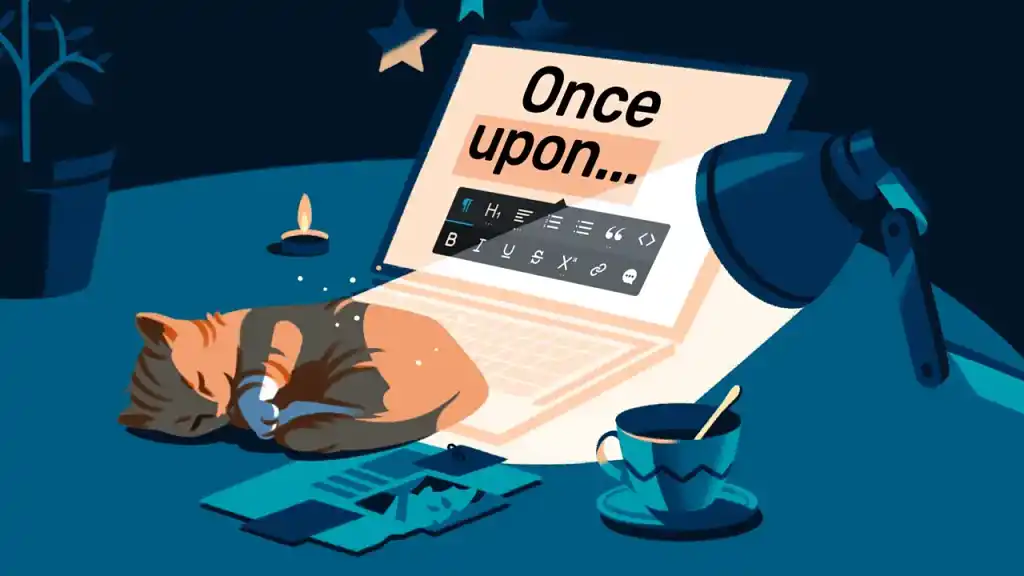Last updated on Jun 25, 2024
29 Must-Know Examples of Repetition in Literature
About the author
Reedsy's editorial team is a diverse group of industry experts devoted to helping authors write and publish beautiful books.
More about the Reedsy Editorial Team →Martin Cavannagh
Head of Content at Reedsy, Martin has spent over eight years helping writers turn their ambitions into reality. As a voice in the indie publishing space, he has written for a number of outlets and spoken at conferences, including the 2024 Writers Summit at the London Book Fair.
View profile →Editing 101 will always tell you the same thing: avoid repetition in your writing. But make no mistake, repetition isn’t a pariah in the world of prose! In fact, when executed with finesse, it can make a piece of writing all the more compelling.
This post will take you through the basics of repetition. And because the best way to understand a literary device is to see it in skilled action, we’ll also cover 29 remarkable examples of repetition in literature. (To skip past the next section where we define repetition, you can jump straight to those examples!)
Repetition definition
Repetition is a literary device whereby sounds, words, phrases, or full sentences are used multiple times throughout a text. It’s used to emphasize key points, achieve a certain rhythm, tone, or style of prose, or evoke emotions — which is why you’ll often find it in poetry.
However, while it can highlight important details or enhance rhythm, repetition needs to be done with care. If you accidentally repeat words or re-state the same information for readers over and over (and over) again, it can become jarring. For instance, if you’ve already told readers that a character has an unusual beauty mark on their shoulder, mention it once and leave it at that. Hearing about the beauty mark every time that character is in a scene is tiring. If it’s crucial to bring it up more than once, find new and interesting ways of bringing attention to it — instead of just stating its existence, maybe you can have another character comment on it.
If you’re going to repeat a word, phrase, or idea, it needs to have a purpose. Pinpoint exactly why it needs to be said again — or if there’s another way you present it that adds more to the narrative.
To figure out the right way to use this literary device, you first have to learn the different types of repetition.
🤓 Hire an editor who can help you put 'repetition' to good use.
Sean L.
Available to hire
Proofreader/editor for 11+ years, reader for 40+, and as a lifelong fan, horror is my go-to genre.
Avalon R.
Available to hire
Award-winning editor transforming manuscripts into bestsellers. 10+ years crafting fiction, memoir & nonfiction with major publishers.
Stacey G.
Available to hire
Twenty+ years professionally editing cozy mysteries, sci fis, and more. I edit more than you pay me for! Gentle, professional, detailed.
Types of repetition
Did you know that there are at least 15 main types of repetition? They fall into two categories: words and sounds. Let’s start with...
Repetition of Words
1. Anadiplosis
The last word of a clause or sentence is repeated as the first word of the next one.
Example: "Fear leads to anger; anger leads to hatred; hatred leads to conflict; conflict leads to suffering." — Yoda, in Star Wars Episode I: The Phantom Menace.
2. Anaphora
The word or phrase at the beginning of successive clauses or sentences is repeated.
Example: “It rained on his lousy tombstone, and it rained on the grass on his stomach. It rained all over the place.” — The Catcher in the Rye by JD Salinger
3. Antistasis
The repetition of words or phrases in different or contrary senses.
Example: “We must, indeed, all hang together or, most assuredly, we shall all hang separately.” — Benjamin Franklin
4. Conduplicatio
The frequent repetition of a word or phrase within a paragraph, in order to expand upon its meaning.
Example: “Now is the time to make real the promises of democracy. Now is the time to rise from the dark and desolate valley of segregation to the sunlit path of racial justice. Now is the time to lift our nation from the quicksands of racial injustice to the solid rock of brotherhood. Now is the time to make justice a reality for all of God's children." — Martin Luther King, Jr.
5. Diacope
The repetition of words separated be additional words, which alter their meaning.
Example: “We few, we happy few, we band of brothers.” — Henry V by Shakespeare
6. Epanalepsis
The word both at the beginning and at the end of the clause or sentence is repeated.
Example: “Next time there won't be a next time.” — Phil Leotardo, in The Sopranos
7. Epimone
The word or phrase is repeated to place emphasis on its meaning.
Example: “Mr. Dick shook his head, as utterly renouncing the suggestion; and having replied a great many times, and with great confidence, ‘No beggar, no beggar, no beggar, Sir!’” — David Copperfield by Charles Dickens (Are you a Dickens fan? Read up on 15 of his classics novels in our guide to Dickens!)
8. Epiphora
The repetition of a word or phrase at the end of a series of clauses or sentences.
Example:
If you did know to whom I gave the ring,
If you did know for whom I gave the ring
And would conceive for what I gave the ring
And how unwillingly I left the ring,
When naught would be accepted but the ring,
You would abate the strength of your displeasure.
— The Merchant of Venice by Shakespeare
9. Epizeuxis
The successive repetition of a word or phrase within one clause or sentence.
Example: “The horror, the horror.” — Heart of Darkness by Joseph Conrad
10. Negative-Positive Restatement
An idea or phrase is presented in negative terms, and then repeated in positive terms.
Example: “The tragedy of old age is not that one is old, but that one is young.” — The Picture of Dorian Gray by Oscar Wilde
11. Polyptoton
The same root word is repeated in different forms.
Example: “Today you are You, that is truer than true. There is no one alive who is Youer than You.” — Happy Birthday to You! by Dr. Seuss
12. Symploce
The repetition of a word or phrase both at the end and at the beginning of a clause or sentence. (In other words, a combination of anaphora and epiphora.)
Example:
"The yellow fog that rubs its back upon the window-panes,
The yellow smoke that rubs its muzzle on the window-panes…”
— “The Love Song of J. Alfred Prufrock” by T.S. Eliot
Sound Repetition
Do you hear that? Is it bat, a rat, or a gnat? And speaking of sounds that repeat themselves, let’s take a look at...
13. Alliteration
The successive repetition of consonant sounds in the stressed part of a word.
Example: “She sells seashells by the sea-shore.”
14. Assonance
The vowel sounds are repeated.
Example: “"Hear the mellow wedding bells…” — “The Bells” by Edgar Allan Poe
15. Consonance
The repetition of consonant sounds in successive or closely connected words. The difference between consonance and alliteration is that alliteration is at the beginning of the word (so “Peter Piper”), but consonance can be anywhere in the word.
Example:
I'll swing by my ankles.
She'll cling to your knees.
As you hang by your nose,
From a high-up trapeze.
But just one thing, please,
As we float through the breeze,
Don't sneeze. — “The Acrobats” by Shel Silverstein
Okay, now that we’ve gotten seamlessly up to speed (pardon the alliteration), on the different types of repetition, let’s look at some exemplary examples from literature (pardon the polyptoton).
Repetition examples in literature
Let’s turn this section into a little quiz. Try to guess what kind of repetition each quote is using as you read through — the answers will be provided at the bottom!
Example #1: The Hitchhiker's Guide to the Galaxy by Douglas Adams
"Space is big. You just won't believe how vastly, hugely, mind-bogglingly big it is. I mean, you may think it's a long way down the road to the chemist's, but that's just peanuts to space."
Example #2: The Innocents Abroad by Mark Twain
"They are not paid for thinking--they are not paid to fret about the world's concerns. They were not respectable people--they were not worthy people--they were not learned and wise and brilliant people--but in their breasts, all their stupid lives long, resteth a peace that passeth understanding!"
Example #3: Deep River by Shusaku Endo
“Hatred was spreading everywhere, blood was being spilled everywhere, wars were breaking out everywhere.”
Example #4: A Tale of Two Cities by Charles Dickens
“It was the best of times, it was the worst of times, it was the age of wisdom, it was the age of foolishness, it was the epoch of belief, it was the epoch of incredulity, it was the season of Light, it was the season of Darkness, it was the spring of hope, it was the winter of despair, we had everything before us, we had nothing before us, we were all going direct to Heaven, we were all going direct the other way—in short, the period was so far like the present period, that some of its noisiest authorities insisted on its being received, for good or for evil, in the superlative degree of comparison only.”
Example #5: Beloved by Toni Morrison
“Beloved is mine; she is Beloved.”
Example #6: Lolita by Vladimir Nabokov
“What I present here is what I remember of the letter, and what I remember of the letter I remember verbatim (including that awful French).”
Example #7: Outer Dark by Cormac McCarthy
“And stepping softly with her air of blooded ruin about the glade in a frail agony of grace she trailed her rags through dust and ashes…”
Answers: a) Epimone; b) Symploce; c) Epistrophe; d) Anaphora; e) Epanalepsis; f) Anadiplosis; g) Assonance
Examples of repetition in poetry
Repetition is especially prevalent in poetry, as it can help achieve a certain resonance with readers. Again, read through the following examples of poetic repetition and guess what type each uses.
Example #1: "Stopping by Woods On a Snowy Evening" by Robert Frost
“The woods are lovely, dark, and deep,
But I have promises to keep,
And miles to go before I sleep,
And miles to go before I sleep.”
Example #2: "Do Not Go Gentle into the Good Night" by Dylan Thomas
“Do not go gentle into that good night,
Old age should burn and rave at close of day;
Rage, rage, against the dying of the light.
Grave men, near death, who see with blinding sight,
Blind eyes could blaze like meteors and be gay,
Rage, rage against the dying of the light.”
Example #3: “Annabel Lee” by Edgar Allen Poe
“It was many and many a year ago,
In a kingdom by the sea,
That a maiden there lived whom you may know
By the name of Annabel Lee;
And this maiden she lived with no other thought
Than to love and be loved by me.”
Example #4: "Song of Myself, 3" by Walt Whitman
“There was never any more inception than there is now,
Nor any more youth or age than there is now,
And will never be any more perfection than there is now,
Nor any more heaven or hell than there is now.”
Example #5: "A Child is Born" by Stephen Vincent Benet
“Life is not lost by dying! Life is lost
Minute by minute, day by dragging day,
In all the thousand, small uncaring ways.”
Example #6: "The Gnome, The Gnat, & The Gnu" by Shel Silverstein
"I saw an ol' gnome
Take a gknock at a gnat
Who was gnibbling the gnose of his gnu.
I said, "Gnasty gnome,
Gnow, stop doing that."
Example #7: "Coda" by Dorothy Parker
“There’s little in taking or giving,
There’s little in water or wine;
This living, this living, this living
Was never a project of mine.”
Answers: a) Epizeuxis; b) Assonance; c) Consonance; d) Epiphora; e) Diacope; f) Alliteration ; g) Epizeuxis
Now that you know how to make repetition your writing’s best friend, let’s give a shout-out to your best friend when it comes to removing unnecessary repetition: CTRL+F. We are all guilty of over-relying on specific words that crop up in our writing again and again. Get acquainted with your own habitual words, and then use CTRL+F to sweep your document for them. Find, remove, repeat! 😊








